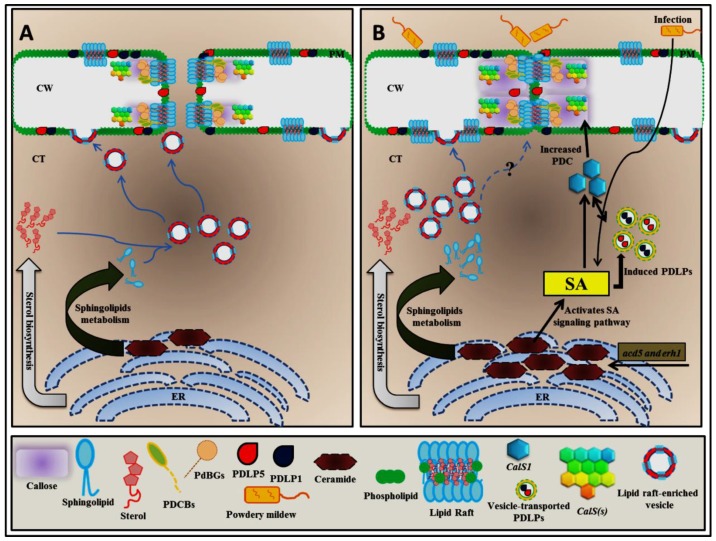Figure 1.
Hypothetical model of how ceramides could control PD permeability. Sterol and sphingolipid biosynthesis begins at the endoplasmic reticulum (ER), and these molecules are subsequently transported to the plasma membrane by the vesicle-mediated exocytosis pathway to form lipid rafts, preferentially at plasmodesma (PD) membranes. Eventually, PD membranes are enriched by lipid raft formation (A). The excessive ceramide in acd5 and erh1 mutant plants enables the salicylic acid (SA)-mediated upregulation of PD LOCATED PROTEIN (PDLP) and CALLOSE SYNTHASE1 (CalS1) transcript levels to induce plasmodesmata callose (PDC) accumulation (B); SA-mediated PDLP and CalS1 activation can also be directly upregulated during infection with a biotrophic pathogen such as powdery mildew (B). Blue arrows, trafficking; black arrows, signaling; Question mark, not enough evidence that explains how the lipid raft–enriched vesicle controls plasmodesmata callose directly.

